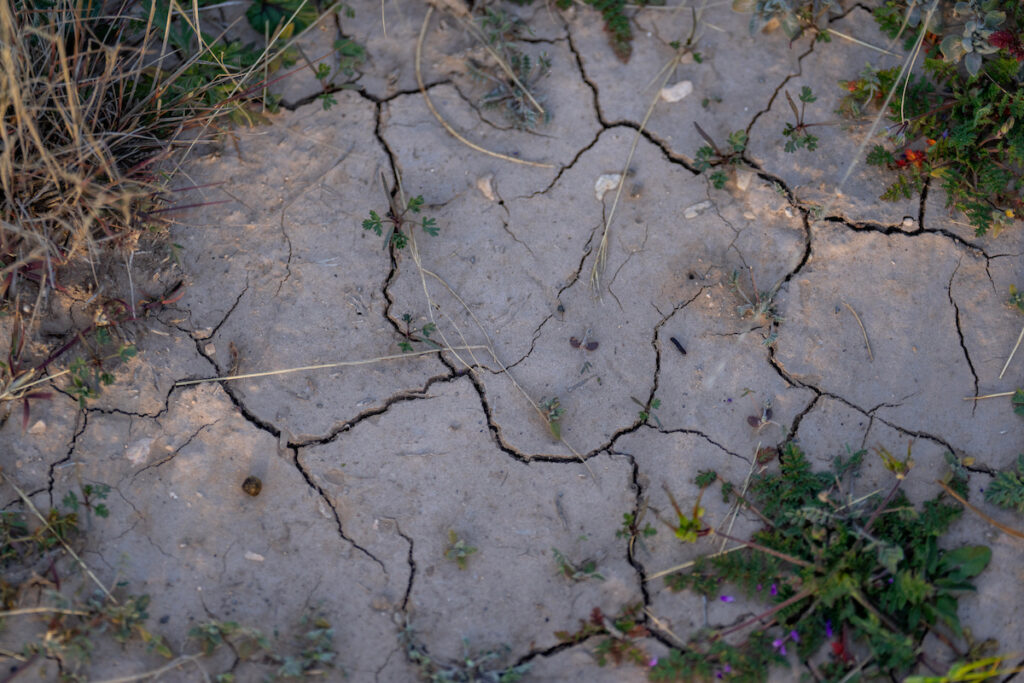- Fragile Planet Offers a Nighttime Wildlife Experience
- Falcons Soccer Off & Running
- Cameron County Receives Funds to Improve Two Parks
- Falcons Complete First Half of 32-6A
- School District to Help out Victims of California Wildfires
- Sand Castle Days Continued Despite Unexpected Weather
- Ready for District
- Discussion of Garbage Dumpster Rates, Agreements Between State & City on Highway Regulations, and More
- 31st Annual Shrimp Cook-Off is Right Around the Corner
- LFHS Cross Country
Water Well Owners: Don’t Get Left High And Dry During Drought
- Updated: August 6, 2023
What Texans who rely on groundwater need to know now

The heat wave that has swept across the state has taken a toll on many water wells in Texas, which were already affected by extended drought conditions.
With a lack of moisture and record-setting temperatures, people who rely on well water need to be aware of the signs that their well may run out and take steps to prevent that from happening.
Joel Pigg, Texas A&M AgriLife Extension Service specialist and coordinator for the Texas Well Owner Network, or TWON, Bryan-College Station, doesn’t want Texans in rural areas to be left high and dry. He shares some useful tips for anyone who depends on groundwater for their everyday needs.
How to identify a problem
If your well starts to sputter, loses pressure or if your water looks anything less than clear, it’s a problem. If your pump is rapidly cycling on and off, turn it off, Pigg said. If your pump sounds like it is sucking air, let it rest.
Low or slow-recovering water levels will make your pump cycle rapidly and can burn out the motor, he said. Low water levels also can cause submersible pumps to overheat and damage PVC pipes. If the water level doesn’t rise, you may need to reduce your pumping rate or lower the pump. If the water level drops below the point of your pump intake, the pump could burn up.
There are warnings for well owners that their water level is dropping and may go dry. The well may begin to produce sand and air bubbles. Watch for sand in the toilet tank and cloudy-looking tap water that clears up after a while.
Understand where your water comes from
Most people take for granted that if they turn on a faucet in their home, water comes out, Pigg said. But people may not always think beyond that until that tap dries up or water starts coming out with a funny taste, smell or cloudiness.
People, especially new home or landowners, need to make sure they know if they have a water well, a city water supply or are on a water system.
“A lot of people who are buying properties in more rural areas don’t know that and don’t think to ask that question,” Pigg said. “Folks with a piece of property that they may not have owned for very long, or if it is their secondary vacation property, may not consider what being on well water entails and requires.”
During droughts, people rely more heavily on groundwater, which is the water held underground in aquifers. When more water is pumped out of the aquifer than is replenished by rain or other water sources, it becomes depleted.
Be conscious of your usage and conserve
Low pressure from a well may leave you needing to space out things that require water, such as showering or washing dishes or clothes.
“Essentially that aquifer needs time to fill back up,” Pigg said. “You do not want to run it down so low that you are sucking air or sediments into your pump.”
A pump without water can burn up and lead to costly repairs, he said. You may also want to consult with your neighbors on a schedule to distribute heavy water use over the week to help individual wells recover and to maintain the water supply for everyone in your area.
During drought, it is also important to prioritize what you’ll use water for and when. You may also want to add a pumped-water storage tank. This type of tank can help meet peak demand when you need more water than your pump can produce.
Give up on green and think native
Implementing native landscapes can reduce irrigation demands during summertime, Pigg said.
“If you’re coming out of Austin, San Antonio, Houston or a metro area and buying a private place in somewhere like Rock Springs, which has rocks on the ground and not green, lush grass, that is telling you something,” Pigg said.
Don’t try to get the lush grass that you’re used to having in your city yard when you are on a well, he said, because it’s just not meant to be.
Pigg said to look at native landscaping and utilize what belongs and can survive in your area. Plus, he added not having to mow is a bonus of not having the perfect green lawn aesthetic that many people think they need.
“Basically, it comes down to conservation and common sense when you’re in the drier parts of our state — the closer to a natural state your yard is in, the better for saving water,” he said.
A rainwater harvesting system is a good way for catching and storing water to use for purposes such as watering plants in a garden or washing your car.
You don’t need rain for a catchment system to work. Even a slight amount of dew on your roof overnight helps, but a 1-inch rain can produce 620 gallons from a 1,000-square foot roof that can be stored as water for future use. In Texas, every drop counts.
Call a professional
Water well repairs are not a DIY-project. Call a Texas Department of Licensing and Regulation professional when you start to have issues; often it is something that can be fixed and is better addressed sooner rather than later.
“It is important with your pump to know what’s happening underneath the ground, because nine times out of 10 it’s a submersible pump that is inside your well,” Pigg said. “Which means it is not something you can just readily look at.”
The inability to see a pump makes it hard to troubleshoot. Pigg said homeowners may need to utilize local drillers or pump installers to fix situations.
“Hopefully, whenever your well was initially put into the ground, they did not put your pump all the way down to the bottom of the hole,” he said. “So typically, you should have a little bit more room to add more pipe to your pump and be able to go down further into the aquifer to get water.”
Adding 10-20 feet of pipe to a well can make more water available to your home.
Stay safe
Pigg said residents with water wells should also test their well water quality regularly, especially during and after times of drought.
As the water levels drop, air enters the aquifer and changes its chemistry. Oxygen in the aquifer will increase concentrations of naturally occurring contaminants such as arsenic.
If your well normally contains low concentrations of arsenic, you can expect it to increase during a drought. The concentrations of other contaminants, such as total dissolved solids or salt, can also change.
It is important that people and their pets don’t drink well water that has changed or hasn’t been tested recently. If it smells, tastes or looks funny, do not consume it.
Utilize educational resources
AgriLife Extension, TWON, Texas Water Resources Institute and regional water districts can all assist homeowners with water conservation and well questions.
TWON offers fact sheets on many common well questions and issues and offers educational events including trainings.
Some AgriLife Extension county offices can also aid with well water testing. Those counties that don’t have a testing program in place can connect you to local testing facilities and point Texans in the right direction to make sure all is well with their wells.



